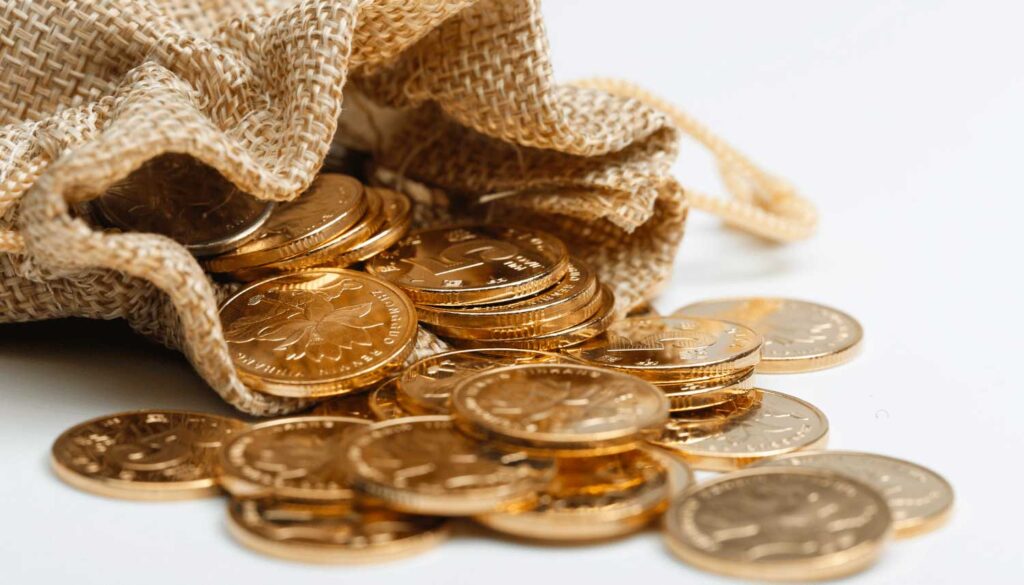The price of gold, as measured in U.S. dollars, hit a peak just over $1,900 in early September 2011. Since then the price has mostly declined. Since early October 2012, for instance, the spot price is down about 26 percent.
In June, gold dropped below $1,200. Since then it pushed up to top $1,400 before declining again and bouncing around in the high $1,200s and low $1,300s.
While the recent price declines may lead some to be pessimistic about higher future prices, I believe a review of several current factors supports my contention that gold prices are destined to go to far higher levels in the not-too-distant future.
First, you have to look at declining physical supplies. At many mines, the cash cost to extract an ounce of gold is higher than the price at which that ounce of gold can be sold. Gold mining companies around the world are closing mines and suspending further development on future mining ventures.
Next, look at what is happening to the above-ground supplies. At the beginning of 2013, SPDR Gold Shares, the world’s largest gold exchange traded fund (symbol GLD) had outstanding shares representing 43 million ounces of gold. There have been massive redemptions of physical gold this year, with the result that outstanding shares now represent only about 28 million ounces of gold. Several analysts judge that almost all of the physical gold redeemed has gone to the Far East.
GLD is apparently having some problems in making further deliveries out of its holdings. I am regularly receiving reports over the past couple of months that GLD has rejected attempts by some shareholders to redeem their 100,000 share blocks (representing 10,000 ounces of gold valued at more than $13 million) despite following GLD’s requirements to make such redemptions.
In late 2012, the COMEX had over 3 million ounces of “registered” gold inventories in its vaults. As on the Oct. 16 report, the registered inventories had declined to just 730,000 ounces. As of Oct. 18, there were outstanding claims against this registered inventory of 38.4 million ounces. Now, the COMEX also has “eligible” gold in its vaults. This inventory cannot be used to fulfill maturing COMEX contracts unless the owner specifically elects to do so. At the end of 2012, eligible inventories were around 9 million ounces. On Oct. 16, that potential supply had dwindled to just over 6.2 million ounces.
The agreement among most of the world’s central banks to limit their sales of gold reserves has turned into a joke. Theoretically, the central banks have agreed to sell no more than 500 metric tons of gold in each 12-month period ending every Sept. 30. Well, for the latest 12-month period, the central banks sold a paltry five tons, just 1 percent of the limit.
As you can see, physical gold supplies are tightening.
On the demand side, interest in purchasing physical gold is growing significantly.
A few months ago, India placed restrictions on gold imports to supposedly reduce the outflow of the government’s currency reserves. Because of that, gold demand from India, formerly the highest gold consuming nation in the world, has somewhat shifted to purchasing extraordinary quantities of physical silver. Still, demand for the yellow metal is strong enough that, at one point last week, gold was trading for more than $100 above the world spot price.
However, China is now firmly entrenched as the world’s top gold consuming nation. China’s government started buying large quantities of gold reserves in 2003, but did not make these figures public until 2009. Since 2009, China has not updated its holdings of gold reserves.
However, the Chinese government has been so aggressive purchasing physical gold that it is possible it may now hold more gold reserves than any nation other than the United States. Last week, one analyst projected that China may be looking to acquire as much as 160 million ounces of gold in the next few years, which would absorb the majority of all newly mined gold over that time.
On top of official Chinese demand, the government there is encouraging private citizens to acquire gold. The Chinese have an extremely high savings rate, possibly over 40 percent of income, with a notable portion of that going to purchase physical gold. Demand is so strong that buyers often have to wait in line for hours to make their acquisitions.
Contracts traded on the Shanghai Gold Exchange are fulfilled with delivery of physical gold. The volume on this exchange has soared to now handle over 50 percent of global newly mined gold each year. Because these contracts are settled in physical metal, prices on this exchange tend to be $10-$30 higher than those quoted in the London and COMEX paper-contract markets.
Even ignoring China and India, the world’s central banks are now net buyers of physical gold – and at the largest levels in almost 50 years.
As for the United States, demand for physical gold was strong after prices dipped in mid-April, then again in June, and also since the limited U.S. government shutdown at the beginning of this month. However, physical gold demand in the U.S. and Europe is dwarfed by demand from China, the rest of the Far East and the Middle East.
Perhaps the scariest development for the price of gold is not what is happening with the metal itself, but what has happened and is likely to occur to the value of the U.S. dollar. The politicians in Washington seem to be running out of gimmicks to try to support the dollar.
The Federal Reserve has been forced to step into the breach to now purchase most newly issued U.S. Treasury debt. In total, foreign central banks are now rolling over or cashing in their Treasury debt rather than adding more to their reserves.
Then you have the problem that neither the Democrats nor the Republicans are serious about massive reductions in federal spending to try to eliminate $5-$8 trillion annual budget deficits (as calculated using the more accurate accrual basis of accounting that is required in the private sector). On top of that the accumulated debt and future liabilities, which have a present value somewhere between $80-$220 trillion depending on who you ask, are not being addressed at all.
Financial mismanagement in the federal government is now so rampant that during the partial shutdown of the U.S. government even the Chinese government told America to get its finances straightened out.
So, did the Continuing Appropriations Act of 2014 signed into law last week improve matters? Not at all. No actual expenditure cuts were made. Further, Section 1002 of this Act (which, by itself is separately titled the Default Prevention Act of 2013) effectively abolishes the federal debt ceiling – permanently.
With the US government having the green light to increase spending without limit, I don’t see any possibility that expenditures will decline 75 percent or more – ever.
Consequently, I expect physical gold demand to be stronger in the future than it is today. I further anticipate the decline of the U.S. dollar.
So, with the Chinese government working to be able to back its currency with gold and the U.S. in position to further destroy the future value of the U.S. dollar, the prospects for much higher future gold prices are bright.
To me the question is when, not if, the price of gold will soar against the U.S. dollar. I certainly expect it within the next 2-3 years at the longest. However, I would not be surprised if gold hit record high levels by mid 2014.
One last word of caution: if the price of gold heads toward financial “paradise” levels of $3,500, $5,000, or even $10,000, don’t expect that owning physical gold will make life easy for you. For gold to take off to such levels will mean there are significant economic disruptions happening. While owners of physical gold may be better off than those who aren’t, don’t expect it to be all peaches and cream.
Patrick Heller – Coin Info – October 23, 2013






